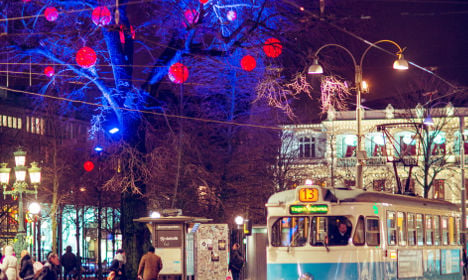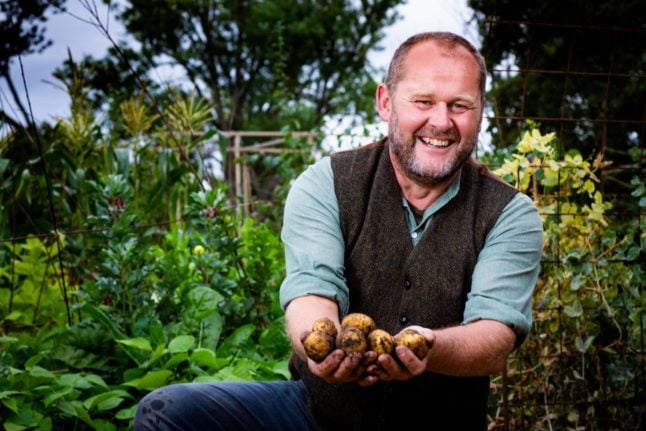The Lane of Light, Gothenburg
One way to make the most of Christmas in Gothenburg this year is to follow the city’s 'Lane of Light'. In essence it’s a three kilometre stretch of Christmas light installations running from Göteborg Opera on the harbour to the Liseberg amusement park further south, with various buildings, bridges and more lit up in different ways along the route.
The path also cuts through Kungsportsplatsen, where Gothenburg’s ‘Singing Christmas Tree’ will feature daily performances of Christmas songs until December 23rd. The Lane of Light starts on December 1st and continues until January 8th. A handy map of the route can be found here.

A section of a previous incarnation of the Lane of Lights. Photo: Dino Soldin/Göeborg & Co
Icehotel 365, Jukkasjärvi
The Icehotel in Jukkasjärvi near Kiruna is famous the world over, but while previous incarnations of the building have been allowed to melt before being completely remodeled and rebuilt each year, this month marks the launch of a new permanent section.
Icehotel 365 boasts nine deluxe suites – each with their own sauna – as well as its own ice bar and ice gallery, but apart from that most of the details are being kept under wraps, including what it will look like! As usual everything is built out of snow and ice, sculpted by artists who have been brought in from around the world to create it. The new section opens on December 1st, so why not start Christmas by finding out what all the fuss is about? Prices and tickets are available here.
Christmas concert, Uppsala
University city Uppsala will get the month going in a more subtle way with a Christmas concert this weekend to help spread some festive cheer.
The performance will take place on Saturday afternoon at Helga Trefaldighets church right next to Uppsala cathedral, and while the building isn’t quite as grand as its bigger neighbour, it still dates back to the 1300s. Vocal group Simplyfive will perform, times and the venue’s address can be found here.
Winter Live, Umeå
Northern Sweden's biggest town is set to host a special winter event during the first weekend of December which will take over Rådhusesplanaden, the stretch between Rådhustorget and Järnvägstorget. That means music, dancing and other performances, reindeer, mulled wine and much more.
The events will run between noon and 4pm on Saturday and Sunday. Details are available here.
Live Christmas calendar, Stockholm
Every year, TV network SVT broadcasts a new Christmas calendar series with daily episodes airing between December 1st and Christmas Eve, and it’s so popular that many consider it an essential part of Swedish Christmas tradition.
The concept is taken a step further by the Mäster Olofsgården charity in Stockholm’s Old Town, which for the last 12 years has organized a live Christmas calendar in the area. At 6.15pm each day between December 1st and 24th different windows will open in Gamla Stan and a new Christmas calendar scene will be performed by Swedish actors and musicians, so if you’re in the neighbourhood at that time it’s worth keeping an eye and an ear open.
For those not willing to leave it to chance, a map of the different windows and the corresponding dates on which they will be opened on can be found here.
Winter Magic, Malmö
One of Malmö’s biggest 2016 Christmas celebrations will take place at Gustav Adolfs torg under the umbrella of “Winter Magic” (Vintermagi). The square will be covered in lights and host igloos, a winter garden, and of course, a Swedish Christmas market from now until December 23rd.
READ ALSO: Ten of the merriest Christmas fairs in Sweden
The festivities are open daily between 11am and 6pm, and cost nothing to look at. The sweet treats on sale at the market are a different question.
Check out our interactive calendar below for more things to do in Sweden.
DoTodaySearch.init({ “singleurl”:”https://www.thelocal.se/page/view/whats-on-in-sweden/”, “language”:”en”, “widget”:11618736});
DoTodaySearch.init({ “singleurl” : “https://www.thelocal.se/page/view/whats-on-in-sweden/”, “language” : “en”, “widget” : 11618736 });




 Please whitelist us to continue reading.
Please whitelist us to continue reading.